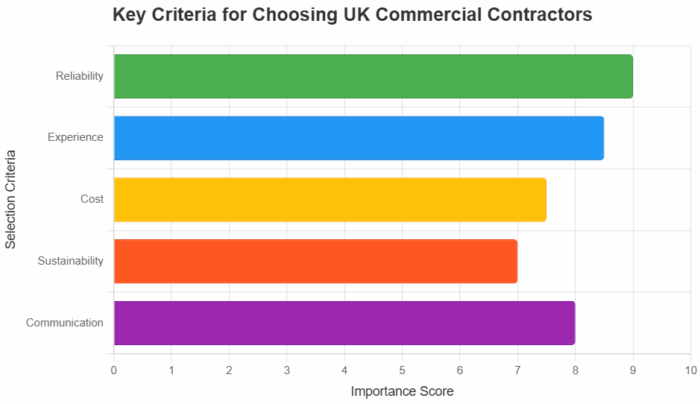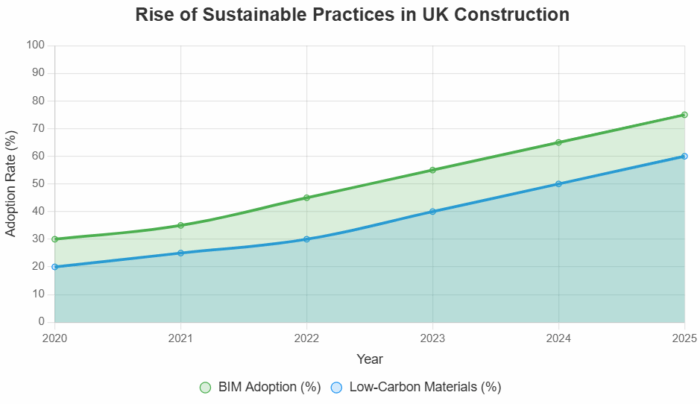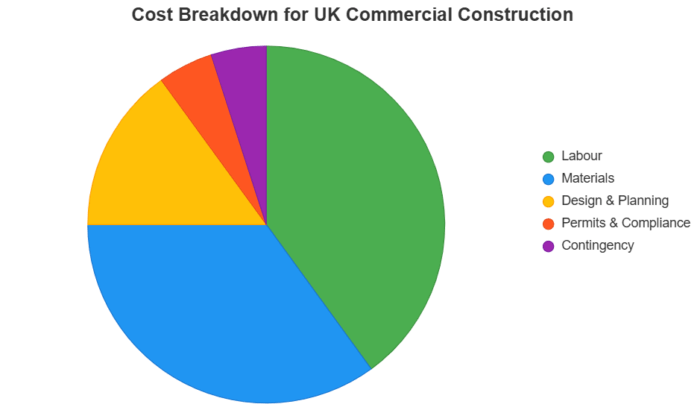Best Practices to Hire Commercial Building Contractors in the UK (With Expert Tips)
October 13th 2025

Picture this: You’re a business owner eyeing that prime spot in Manchester for your new office headquarters, or perhaps expanding your retail chain with a sleek warehouse in Birmingham. The vision is crystal clear—a space that screams efficiency, sustainability, and future-proof design. But between the blueprints and the groundbreaking lies a minefield: choosing the right commercial building contractor. One wrong pick, and you’re staring down delays, ballooning budgets, or worse, a structure that doesn’t stand the test of time.
As someone who’s overseen a few commercial fit-outs myself (including a tricky multi-tenant refurb in Leeds that turned a dated mill into a buzzing co-working hub), I can tell you: the UK’s construction boom in 2025—fueled by infrastructure investments and a push toward net-zero buildings—makes this decision more pivotal than ever. With the sector projected to hit £360 billion by 2027, and commercial projects leading the charge alongside rising demands for modular and eco-friendly builds, getting it right isn’t just smart; it’s essential for your bottom line and peace of mind.
In this guide, we’ll unpack proven best practices for hiring commercial contractors, laced with expert insights from industry pros and real-world wins. Whether you’re commissioning a high-rise office or a logistics depot, these steps will arm you to select partners who deliver on time, on budget, and with flair. Let’s build something extraordinary—starting with your shortlist.
Why the Right Contractor is Your Project’s Secret Weapon

Commercial construction isn’t child’s play. Unlike residential gigs, these projects juggle complex regs, massive scales, and stakeholder expectations—from investors to end-users. A subpar hire can torpedo your ROI: think 15-20% overruns from poor planning or compliance snags under the Building Safety Act 2022. But nail it, and you unlock perks like 10-15% efficiency gains through tech-savvy contractors and sustainable designs that slash operational costs by up to 30%.
Experts like those at Telconstructions emphasise that the best firms don’t just build; they innovate—integrating BIM (Building Information Modelling) for seamless collaboration and low-carbon materials to meet 2025’s tightened ESG mandates. One London developer I know skipped vetting for speed and ended up with a £200k remediation bill for faulty HVAC. His rival? Paired with a vetted pro and saw their eco-retrofit boost tenant retention by 25%. The lesson? Reliability scales your success.
Best Practice 1: Define Your Project Needs and Scope Up Front
Before scouting, get surgical with specifics. What’s the build type—office, retail, industrial? Timeline? Budget envelope? Sustainability goals, like BREEAM certification?
- Expert Tip: “Start with a comprehensive brief,” advises PNM Construction’s project lead. Include site surveys to flag geo-hazards (e.g., subsidence in clay-heavy southern soils) and factor in 10-15% contingency for 2025’s volatile material prices.
- Pro Move: Engage a quantity surveyor early for accurate cost forecasting—vital as UK steel prices fluctuate with global tensions.
This clarity weeds out mismatches and sets expectations, turning vague dreams into actionable RFPs (Requests for Proposals).

Best Practice 2: Tap Trusted Networks and Accredited Directories
Word-of-mouth still trumps ads in construction. Chat up peers in your industry—property forums or LinkedIn groups like “UK Commercial Real Estate” are goldmines for unvarnished recs.
For broader reach, lean on vetted platforms. UK trade associations ensure members adhere to rigorous standards, from insurance to ethical trading.
| Platform/Association | Key Features | Best For |
|---|---|---|
| National Federation of Builders (NFB) | Represents 400+ firms; advocacy on policy, free tender alerts, vetting for commercial expertise. | Nationwide commercial projects; strong on infrastructure and supply chain support. |
| Federation of Master Builders (FMB) | Largest UK trade body for SMEs; rigorous vetting, client dispute resolution, postcode search. | Mid-sized builds like retail fit-outs; 10,000+ inspected members. |
| Construction Clients’ Group (CCG) | Focuses on major clients; promotes best value, sustainability benchmarks. | Large-scale commercial; links to top-tier contractors like Balfour Beatty. |
| Considerate Constructors Scheme | Monitors site practices for community impact; badge signals professionalism. | Urban projects minimising disruption in high-density areas. |
| Glenigan/Barbour ABI Databases | Project leads and contractor rankings by turnover (£40.8bn in top 100 contracts last year). | Data-driven shortlisting for high-value tenders. |
A quick postcode search on NFB or FMB can yield 5-10 tailored matches. As per Jupiter Construction experts, prioritise those with commercial portfolios—e.g., firms like BAM Construct UK, innovators in green tech with £1.2bn turnover.
Best Practice 3: Vet Thoroughly—Credentials, Experience, and Financial Health
Shortlist in hand? Time for due diligence. Skip the fluff; drill into proofs.
- Check Accreditations: Mandatory: CSCS cards, public liability (£5m+ for commercial), and compliance with CDM 2015 regs. Look for ISO 9001 (quality) and CHAS (health & safety).
- Scrutinise Portfolios: Demand case studies of similar scopes—e.g., a warehouse contractor should showcase logistics hubs, not just homes. Contact 3-5 refs: “Did they hit KPIs? Handle variations smoothly?”
- Financial Stability: Use Companies House for latest accounts. In 2025’s insolvency spike (civil firms up 100% YoY), avoid those with red flags like high debt ratios.
- Expert Tip: From Millstream Ltd: “Site visits reveal truths ads hide. Probe their supply chain—do they lock in prices amid inflation?” Tools like Buildertrend for digital tracking? Bonus points.
Highland Services warns: Unlicensed firms risk fines up to £50k under Building Regs. My Leeds project thrived because we grilled a shortlist on BIM proficiency—spotting one who integrated it flawlessly, saving 12% on clashes.
Best Practice 4: Solicit and Compare Detailed Quotes

Cast a wide net: Get 3-5 fixed-price quotes, but demand breakdowns—labour, materials, timelines, milestones. Beware lowballs; they often hide corners cut.
- What to Weigh: Value over cheapest. Factor in warranties (NHBC-like for commercial?), payment terms (stage-based, max 10% upfront), and variation clauses for scope creeps.
- Expert Tip: Telconstructions pros: “On-site meetings with plans yield precise bids. Cross-check suppliers for 5-10% savings without skimping quality.” In 2025, prioritise modular quotes—up 20% adoption for faster ROI.
Compare via a simple matrix: Cost vs. Timeline vs. Sustainability Score. This apples-to-apples approach spotlighted our winner: competitive pricing with embedded solar-ready designs.
Best Practice 5: Prioritise Communication, Safety, and Innovation
The magic’s in the partnership. Gauge responsiveness—do they assign a dedicated PM? Use collaborative tools like Asana for updates?
- Safety First: With 2025’s zero-harm push, verify SSIP accreditation and incident rates (aim <1 per 100k hours).
- Innovation Edge: Seek BIM Level 2+ adopters and net-zero pledges—Balfour Beatty’s targeting 2040 emissions zero is a benchmark.
- Expert Tip: “Local knowledge trumps all,” says 24Housing. Established supplier ties mean fewer delays in regs-heavy zones like London.
Best Practice 6: Lock It Down with Ironclad Contracts
Words on paper prevent wars. Use JCT (Joint Contracts Tribunal) standards for commercial—outlining scope, penalties for delays (e.g., 0.5% liquidated damages/week), dispute resolution (adjudication first).
- Key Clauses: Force majeure for 2025’s weather wildcards, sustainability KPIs, and post-completion snagging periods (12 months).
- Expert Tip: DavidsonMorris: “IR35-proof for tax compliance; include KPIs for ESG alignment.” Review with a solicitor—£500 well spent.
Pitfalls to Sidestep: Lessons from the Trenches
- Rushing RFPs: Generic ads lure cowboys; stick to associations.
- Overlooking ESG: 40% of tenders now mandate it—ignore at your peril.
- Scope Drift: Uncontrolled changes eat 20% of budgets; enforce protocols.
- Insolvency Risks: With 2025’s uptick, demand parent guarantees for subs.
A Barbour ABI client dodged disaster by ditching a firm with shaky finances—opting for Willmott Dixon, whose public-sector prowess ensured seamless delivery.
Your Action Plan: From RFP to Ribbon-Cutting
Hiring top commercial contractors boils down to prep, probe, and protect. Today: Draft your brief, hit NFB/FMB searches, and line up three site visits. Tomorrow: Quotes in, vetted out. Your project won’t just stand; it’ll soar.
